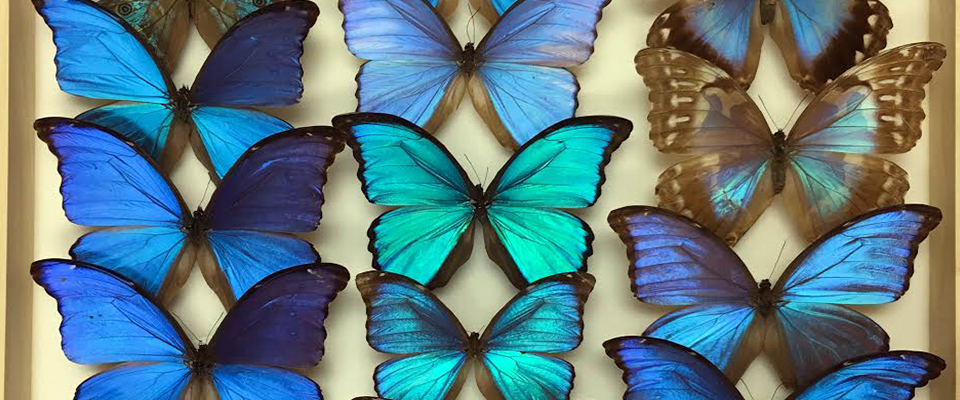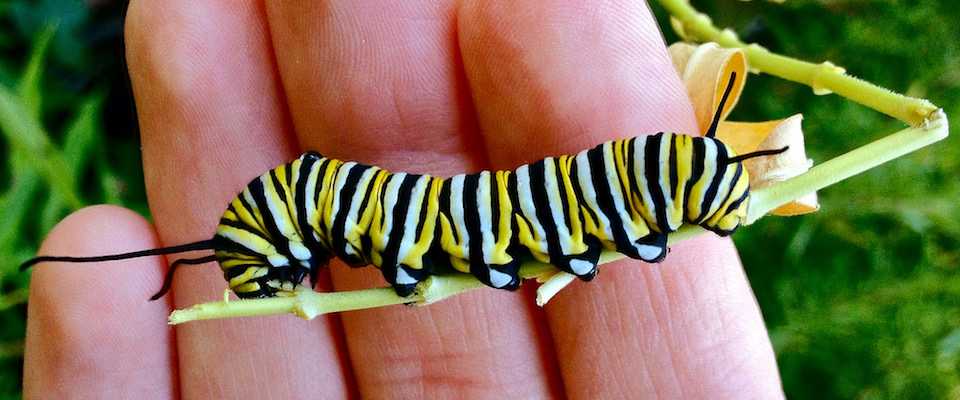If imitation is the sincerest form of flattery, humans have been buttering up the natural world for a long time. It’s often called biomimicry. Think Olympic swimmers in sharkskin-inspired suits, bullet trains shaped like kingfisher beaks, or the ubiquitous Velcro, which was famously modeled after plant burrs.
Yet all of these examples depend on man-made materials and processes. What if we took biomimicry one step further and learned how to grow structures the way they grow in nature?
Dr. Nipam Patel, a professor in the Department of Integrative Biology and the Department of Molecular and Cell Biology at Berkeley, uses his lab to study how butterflies grow their wings. He and his team are particularly interested in structural color, or color created by refracted light instead of pigment. Blue morpho butterflies, perhaps the most famous example of structural color, have bright, iridescent blue wings but contain no blue pigment. Instead, their wings are covered in tiny scales made up of Christmas tree-shaped structures that bend the light to make it appear blue to our eyes.
“Optical physicists have studied this for a long time and they’ve really done a really nice job of understanding it right down to the math of what’s going on,” Patel explained. But his lab is approaching this research from a different angle. “What we’re interested in is how this works at the cell and developmental level. So how does an animal actually make something like this? And we know pretty much zero about that.”
To learn more, Patel’s lab has been studying butterflies that are native to California, predominantly buckeyes and swallowtails. They’re using the buckeyes to map where the genes that control scale thickness are located and the swallowtails to investigate how modifying scale shapes and patterns can change wing color. They’re also researching how some butterflies achieve transparent wings.
Since the color of morpho wings varies in response to air composition, the technology might one day be used to develop more sensitive detectors for volatile chemicals.
Transparency, a useful camouflage to say the least, is fairly common in butterflies and they have myriad ways of achieving it. For example, some butterflies develop clear scales like glass, while others don’t develop any scales at all. Still others have clear windows on their wings where scales have fallen off. Patel explains, “It’s one of these fascinating things where, if there’s a selective advantage for it, then evolution will come up with many solutions.”
There are many ways that humans could adopt structural color for our own uses. For example, since the color of morpho wings varies in response to air composition, the technology might one day be used to develop more sensitive detectors for volatile chemicals. And because the complex structures are hard to replicate, they’re ideal for anti-counterfeit technologies.
One real-world example: ID badges at the 2014 TEDx conference, which featured a pigment-free image achieved with billions of nano-sized, light-refracting holes. Called KolourOptik nanotechnology, the result resembles a hologram, only sharper and harder to copy.
Still, says Patel, most applications of structural color are currently cost-prohibitive and environmentally dubious, as they often require harsh chemicals.
But maybe there’s a more natural and economic approach. “One of our ideas is that if cells can make this easily, and we understand how the cell makes it in a biological way, without chemicals, … maybe we could harness that,” Patel explained. He cautioned against getting too excited, though. Scientists still have a lot to learn about the fundamental biology before we can get carried away with such far-fetched applications as, say, cars that paint themselves.
For now, we have to leave it to the butterflies.





















